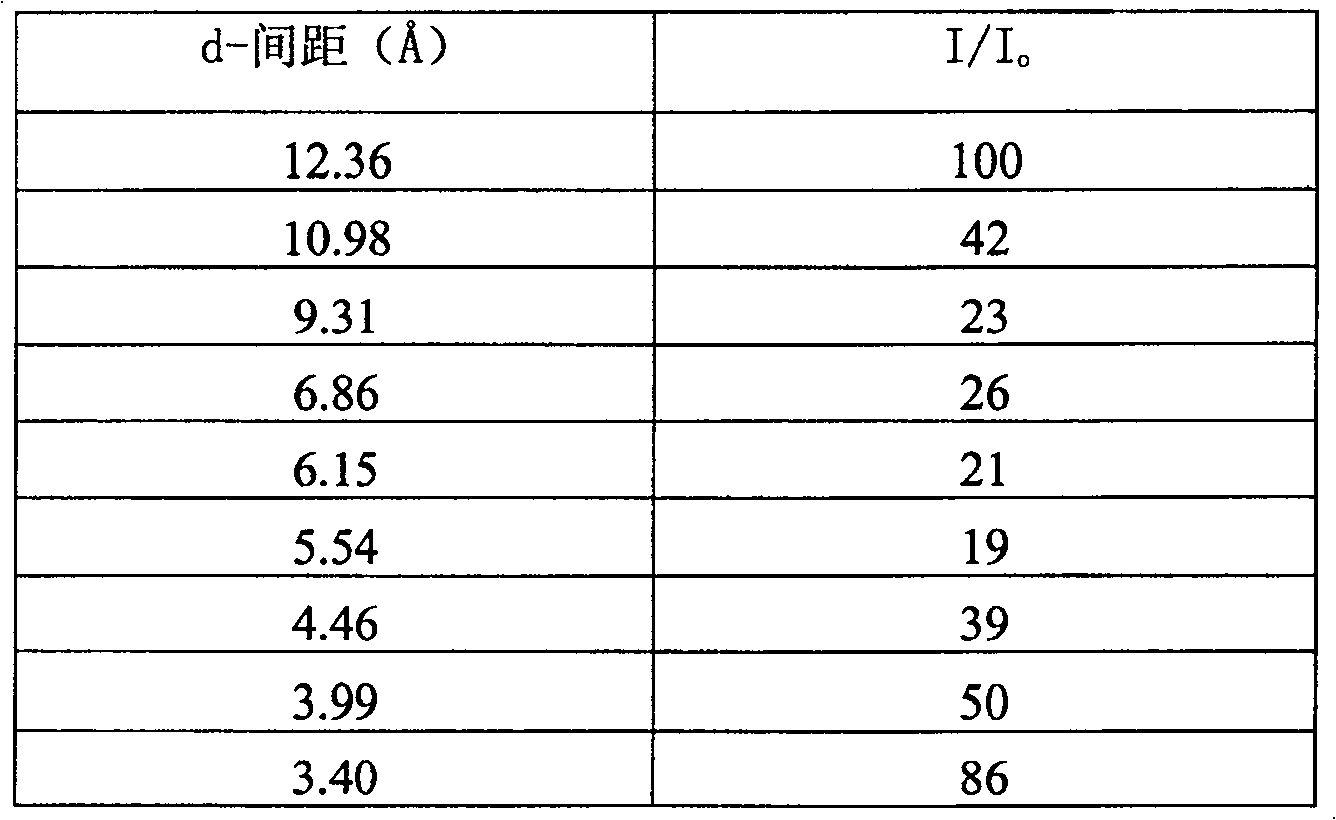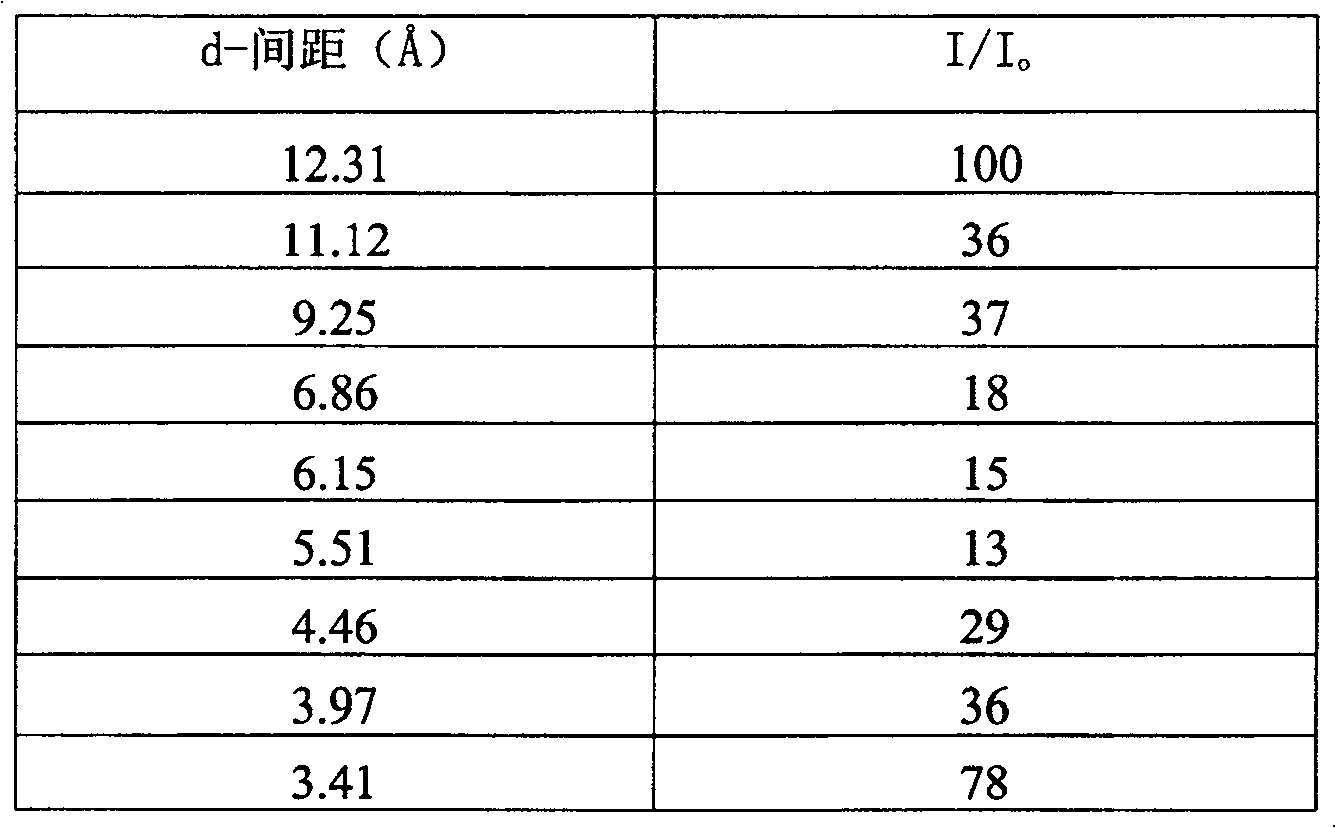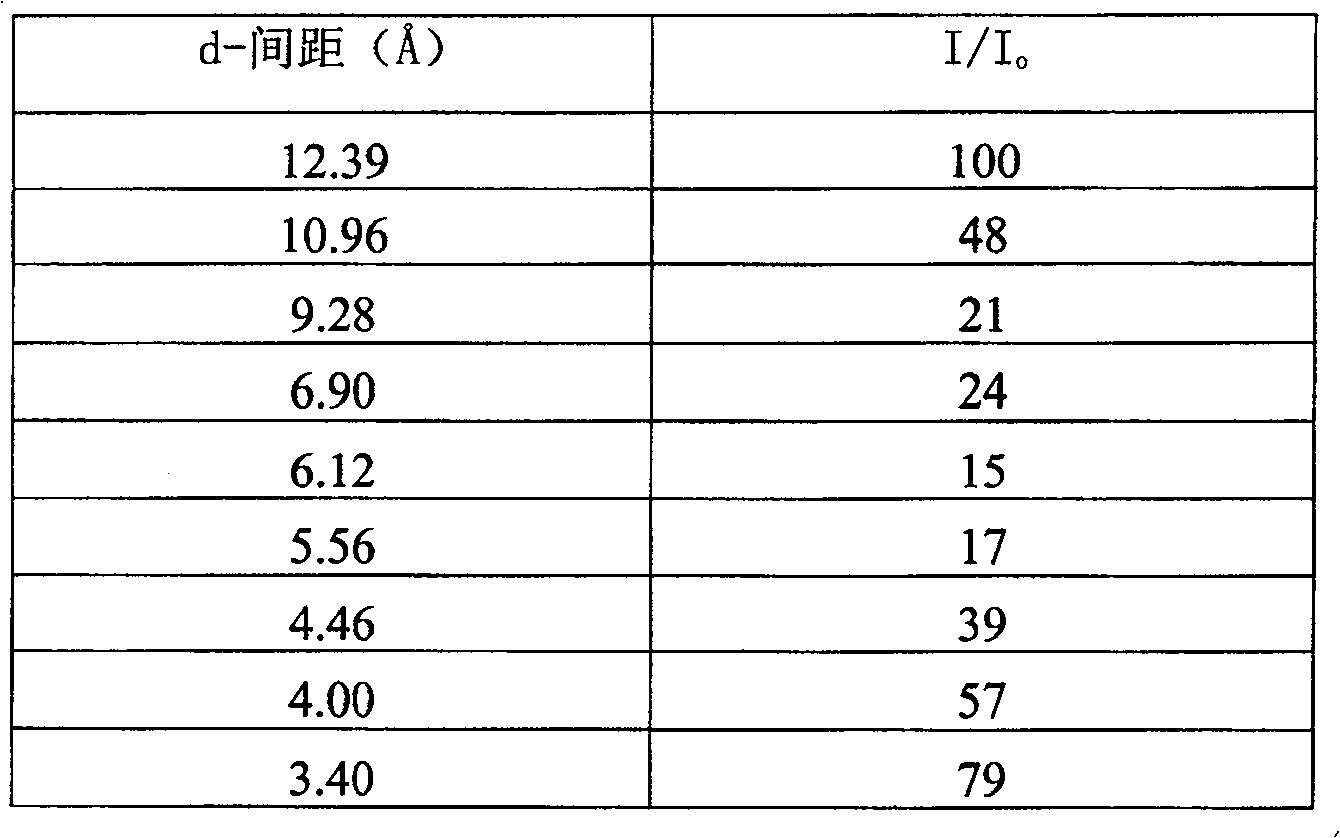Method for producing iso-propyl benzene by benzene and propylene liquid-phase alkylation
A technology of propylene liquid-phase alkyl and cumene, which is applied in the production of bulk chemicals, chemical instruments and methods, organic chemistry, etc. The effect of technical effects
- Summary
- Abstract
- Description
- Claims
- Application Information
AI Technical Summary
Problems solved by technology
Method used
Image
Examples
Embodiment 1
[0021] Sodium aluminate (Al 2 o 3 42.0% by weight) 6.1 grams are dissolved in 288 grams of water, add 1.0 grams of sodium hydroxide to make it dissolve, then add 34.0 grams of hexahydropyridine under stirring, then add 60 grams of solid silicon oxide, and 5.5 grams of trimethylchlorosilane , the material ratio (molar ratio) of reactant is:
[0022] SiO 2 / Al 2 o 3 =40
[0023] NaOH / SiO 2 =0.025
[0024] Chlorotrimethylsilane / SiO 2 =0.05,
[0025] Hexahydropyridine / SiO 2 =0.50
[0026] h 2 O / SiO 2 =16
[0027] After the reaction mixture was evenly stirred, it was put into a stainless steel reaction kettle, and crystallized at 135° C. for 50 hours while stirring. After taking out, it is filtered, washed and dried. SiO was obtained by chemical analysis 2 / Al 2 o 3 The molar ratio was 42.1.
[0028] After drying the sample was determined, its Si 29 The NMR solid-state nuclear magnetic spectrum peak appears at 15.1ppm. Its X-ray diffraction data are shown in T...
Embodiment 2
[0033] Dissolve 3.0 grams of aluminum oxide in 450 grams of water, add 16.0 grams of sodium hydroxide to dissolve it, then add 34.7 grams of hexamethyleneimine while stirring, then add 60 grams of solid silicon oxide, dimethyldiethyl Oxygensilane 5.9 grams, the material ratio (mol ratio) of reactant is:
[0034] SiO 2 / Al 2 o 3 =30
[0035] NaOH / SiO 2 =0.2
[0036] Dimethyldiethoxysilane / SiO 2 =0.04,
[0037] Hexamethyleneimine / SiO 2 =0.35
[0038] h 2 O / SiO 2 =25
[0039] After the reaction mixture was stirred evenly, it was put into a stainless steel reaction kettle, and crystallized at 145° C. for 70 hours while stirring. After taking out, it is filtered, washed and dried. SiO was obtained by chemical analysis 2 / Al 2 o 3 The molar ratio was 30.1.
[0040] After drying the sample was determined, its Si 29 The NMR solid-state nuclear magnetic spectrum peak appears at -18.9ppm. Its X-ray diffraction data are shown in Table 2.
[0041] Table 2
[0042] ...
Embodiment 3
[0045] Sodium aluminate (Al 2 o 3 42.0% by weight) 3.5 g was dissolved in 540 g of water, 8.0 g of sodium hydroxide was added to dissolve it, then 30 g of hexamethyleneimine was added while stirring, and then 60 g of solid silicon oxide, hexamethyl di Siloxane 8.0 grams, the material ratio (mol ratio) of reactant is:
[0046] SiO 2 / Al 2 o 3 =70
[0047] NaOH / SiO 2 =0.2
[0048] Hexamethyldisiloxane / SiO 2 =0.05,
[0049] Hexamethyleneimine / SiO 2 =0.3
[0050] h 2 O / SiO 2 =30
[0051] After the reaction mixture was stirred evenly, it was put into a stainless steel reaction kettle, and crystallized at 135° C. for 35 hours while stirring. After taking out, it is filtered, washed and dried. SiO was obtained by chemical analysis 2 / Al 2 o 3 The molar ratio was 68.5.
[0052] After drying the sample was determined, its Si 29 The NMR solid-state nuclear magnetic spectrum has a nuclear magnetic resonance spectrum peak at 16.8ppm, and its X-ray diffraction data are...
PUM
 Login to View More
Login to View More Abstract
Description
Claims
Application Information
 Login to View More
Login to View More - R&D
- Intellectual Property
- Life Sciences
- Materials
- Tech Scout
- Unparalleled Data Quality
- Higher Quality Content
- 60% Fewer Hallucinations
Browse by: Latest US Patents, China's latest patents, Technical Efficacy Thesaurus, Application Domain, Technology Topic, Popular Technical Reports.
© 2025 PatSnap. All rights reserved.Legal|Privacy policy|Modern Slavery Act Transparency Statement|Sitemap|About US| Contact US: help@patsnap.com



